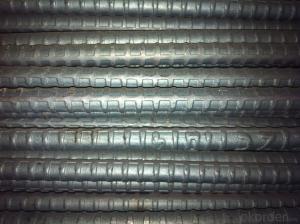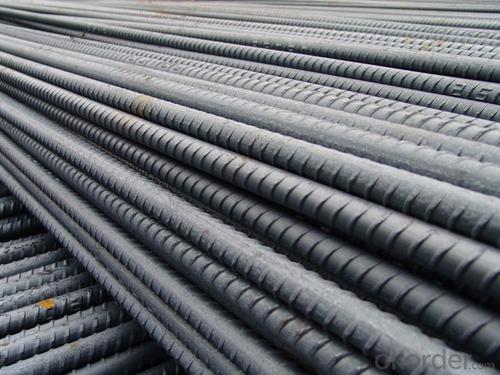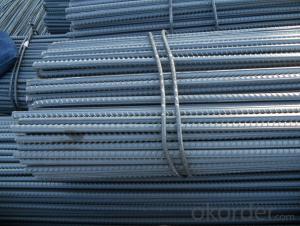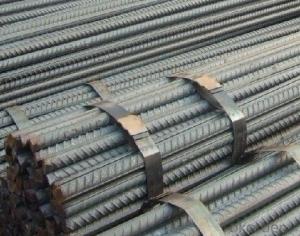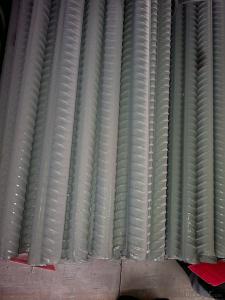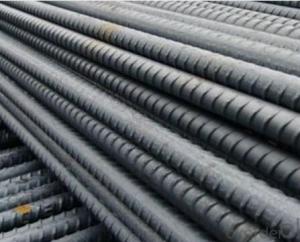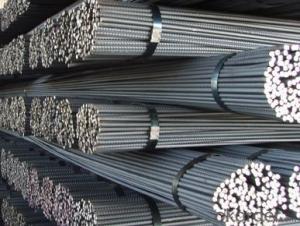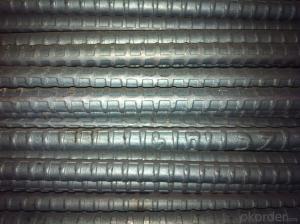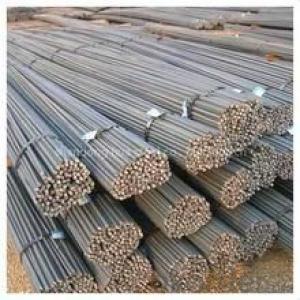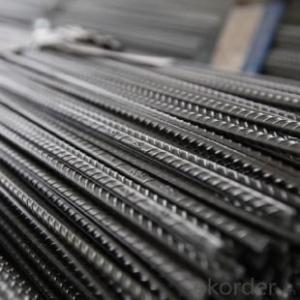Deformed Steel Bar, 10mm 12mm Steel Rebar
- Loading Port:
- China main port
- Payment Terms:
- TT or LC
- Min Order Qty:
- 100 m.t.
- Supply Capability:
- 100000 m.t./month
OKorder Service Pledge
OKorder Financial Service
You Might Also Like
Product Description:
OKorder is offering Deformed Steel Bar, 10mm 12mm Steel Rebar at great prices with worldwide shipping. Our supplier is a world-class manufacturer of steel, with our products utilized the world over. OKorder annually supplies products to African, South American and Asian markets. We provide quotations within 24 hours of receiving an inquiry and guarantee competitive prices.
Product Applications:
Deformed Steel Bar, 10mm 12mm Steel Rebar are ideal for structural applications and are widely used in the construction of buildings and bridges, and the manufacturing, petrochemical, and transportation industries.
Product Advantages:
OKorder's Deformed Steel Bar, 10mm 12mm Steel Rebar are durable, strong, and wide variety of sizes.
Main Product Features:
· Premium quality
· Prompt delivery & seaworthy packing (30 days after receiving deposit)
· Can be recycled and reused
· Mill test certification
· Professional Service
· Competitive pricing
Product Specifications:
Manufacture: Hot rolled
Grade: HRB335,HRB400,HRB500
Certificates: ISO, SGS, BV, CIQ
Length: 6m – 12m, as per customer request
Packaging: Export packing, nude packing, bundled
Deformed Steel Bar | ||
Diameter (MM) | Cross Sectional Area (MM2) | Theorectical Weight (KG/M) |
6 | 28.27 | 0.222 |
8 | 50.27 | 0.395 |
10 | 78.54 | 0.617 |
12 | 113.1 | 0.888 |
14 | 153.9 | 1.21 |
16 | 201.1 | 1.58 |
18 | 254.5 | 2 |
20 | 314.2 | 2.47 |
22 | 380.1 | 2.98 |
25 | 490.9 | 3.85 |
28 | 615.8 | 4.83 |
32 | 804.2 | 6.31 |
36 | 1018 | 7.99 |
40 | 1257 | 9.87 |
Grade | Technical data of the original chemical composition (%) | |||||||
C | Mn | Si | S | P | V | |||
HRB500 | ≤0.25 | ≤1.60 | ≤0.80 | ≤0.045 | ≤0.045 | 0.04-0.12 | ||
Physics capability | ||||||||
Yield Strength(N/cm2) | Tensile Strength(N/cm2) | Elongation (%)
| ||||||
≥500 | ≥630 | ≥12 | ||||||
FAQ:
Q1: Why buy Materials & Equipment from OKorder.com?
A1: All products offered byOKorder.com are carefully selected from China's most reliable manufacturing enterprises. Through its ISO certifications, OKorder.com adheres to the highest standards and a commitment to supply chain safety and customer satisfaction.
Q2: How many tons of steel products could be loaded in containers?
A2: Usually the steel products are delivered by bulk vessel because of the large quantity and the freight. However, there are no bulk vessel enter some seaports so that we have to deliver the cargo by containers. The 6m steel product can be loaded in 20FT container, but the quantity is changed according to the size, usually from 18tons to 25tons.
Q3: How soon can we receive the product after purchase?
A3: Within three days of placing an order, we will arrange production. The normal sizes with the normal grade can be produced within one month. The specific shipping date is dependent upon international and government factors, the delivery to international main port about 45-60days.
Images:
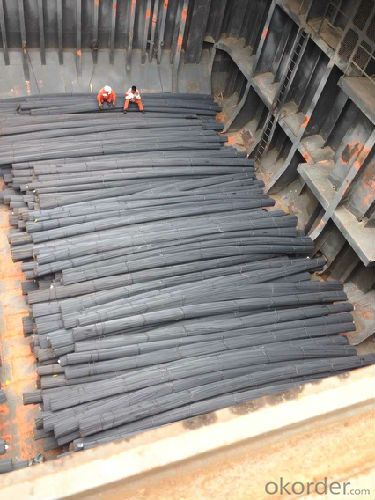
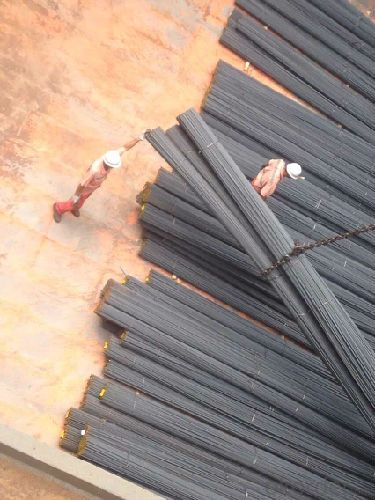
- Q: What is the impact of steel rebars on the carbon footprint of a building?
- Steel rebars have a significant impact on the carbon footprint of a building due to their production process and overall lifecycle. The manufacturing of steel rebars involves the extraction of raw materials, such as iron ore, and the energy-intensive process of smelting and refining them into steel. This phase alone contributes to greenhouse gas emissions and consumes substantial amounts of energy. Additionally, the transportation and construction of steel rebars also contribute to the carbon footprint of a building. The transportation process involves the use of fossil fuels, which release carbon dioxide into the atmosphere. Furthermore, the construction phase requires heavy machinery and equipment, which also rely on fossil fuels, further adding to the carbon emissions. Moreover, the carbon footprint of steel rebars extends beyond the construction phase. Steel is highly durable and can last for decades, but it also requires maintenance and potential replacement over time. These activities, such as repairs or demolitions, incur additional carbon emissions due to transportation, energy consumption, and waste management. However, it is important to note that steel rebars can offer environmental benefits when used in high-performance buildings or sustainable construction practices. For instance, steel is recyclable, and reusing steel rebars can significantly reduce the carbon footprint associated with their production. Additionally, steel rebars provide structural strength, allowing for the construction of taller and more efficient buildings that can potentially reduce energy consumption in the long run. To minimize the carbon footprint of a building, it is essential to consider alternative materials, such as recycled steel or other low-carbon materials, in the construction process. Additionally, implementing energy-efficient practices throughout the building's lifecycle, including reduced energy consumption and improved waste management, can further mitigate the environmental impact of steel rebars.
- Q: Are there any safety precautions to be followed while working with steel rebars?
- Yes, there are several safety precautions that should be followed while working with steel rebars. These include wearing appropriate personal protective equipment such as gloves, safety glasses, and steel-toed boots to protect against potential hazards. It is important to handle rebars with caution to avoid cuts, punctures, or strains, and to use proper lifting techniques when moving heavy or long pieces. Additionally, workers should be aware of their surroundings, maintain a clean and organized workspace, and follow all relevant safety guidelines and procedures to minimize the risk of accidents or injuries.
- Q: What are the different types of steel rebars used in tunnel constructions?
- In tunnel constructions, various types of steel rebars are used to enhance the structural integrity and strength of the tunnels. These rebars are crucial components that provide reinforcement and stability to the tunnel structures. Here are some of the different types of steel rebars commonly used in tunnel constructions: 1. Mild Steel Rebars: Mild steel rebars, also known as black or carbon steel rebars, are the most commonly used type of rebars in tunnel constructions. They are cost-effective and possess adequate strength to meet the structural requirements of tunnels. 2. High-Strength Steel Rebars: High-strength steel rebars, also referred to as tension steel, have enhanced tensile strength, making them ideal for tunnel constructions where high load-bearing capabilities are required. These rebars are typically made from alloys such as ASTM A615 Grade 80 or ASTM A706 Grade 80. 3. Stainless Steel Rebars: Stainless steel rebars are corrosion-resistant and offer excellent durability in harsh tunnel environments. They are commonly used in tunnel constructions where corrosion protection is essential, such as in marine or coastal areas. 4. Epoxy-Coated Rebars: Epoxy-coated rebars are regular mild steel rebars with an epoxy coating applied to protect them from corrosion. They are commonly used in tunnel constructions where the tunnels are exposed to moisture, chemicals, or other corrosive elements. 5. Galvanized Rebars: Galvanized rebars are coated with a layer of zinc to protect them from corrosion. They are commonly used in tunnel constructions where the tunnels are exposed to moisture or in areas with high humidity levels. 6. Fiberglass Rebars: Fiberglass rebars, also known as GFRP (Glass Fiber Reinforced Polymer) rebars, are non-corrosive and lightweight. They are used in tunnel constructions where weight reduction is a critical factor or in areas with high electromagnetic interference. 7. Carbon Fiber Rebars: Carbon fiber rebars, also known as CFRP (Carbon Fiber Reinforced Polymer) rebars, possess high tensile strength and are corrosion-resistant. They are commonly used in tunnel constructions where high tensile strength and resistance to chemical or environmental degradation are required. The selection of the appropriate type of steel rebar for tunnel constructions depends on various factors such as load-bearing requirements, exposure to corrosion, environmental conditions, and project budget. Consulting with structural engineers or construction experts is advised to ensure the optimal choice of steel rebars for tunnel projects.
- Q: Can steel rebars be used in reinforced masonry?
- Yes, steel rebars can be used in reinforced masonry. Steel rebars are commonly used to enhance the strength and stability of masonry structures, such as walls or columns. The rebars are embedded within the masonry, providing added tensile strength and preventing cracking or failure under load.
- Q: What are the common problems associated with steel rebars in construction?
- Some common problems associated with steel rebars in construction include corrosion, improper placement or spacing, inadequate cover, poor welding or splicing, and lack of proper anchorage.
- Q: Why is the price of screw steel affected by iron ore and coal?
- The required material is simple, "billet, iron ore with a small amount of chemical elements", and then through the hot rolling method of refining, during which a large amount of coal is needed, so the price of rebar will be affected by iron ore and coal
- Q: How do steel rebars provide strength to concrete structures?
- Steel rebars provide strength to concrete structures by acting as reinforcement. When embedded within the concrete, rebars enhance its tensile strength, which is otherwise low. As concrete is strong in compression but weak in tension, the rebars resist the tensile forces that can cause cracking or failure in the structure. By distributing and absorbing these tensile forces, steel rebars increase the overall strength, durability, and structural integrity of the concrete.
- Q: What is the typical lifespan of steel rebars in different climates?
- The typical lifespan of steel rebars can vary depending on the climate they are exposed to. In mild, temperate climates, steel rebars can last around 50 to 70 years. However, in more extreme climates, such as areas with high humidity or frequent exposure to saltwater, the lifespan can be shorter, typically around 30 to 50 years. It is important to note that proper maintenance and the use of corrosion-resistant coatings can significantly extend the lifespan of steel rebars in any climate.
- Q: How are steel rebars protected against chemical corrosion?
- Steel rebars are protected against chemical corrosion through a process called corrosion inhibition. This involves applying a protective coating, such as epoxy or zinc, to the surface of the rebars. Additionally, rebars can be embedded in concrete, which acts as a barrier against corrosive substances. Proper maintenance and regular inspections are essential to ensure the long-term protection of steel rebars against chemical corrosion.
- Q: How do steel rebars affect the thermal conductivity of concrete structures?
- Steel rebars have a significant impact on the thermal conductivity of concrete structures. The inclusion of steel rebars in concrete increases the overall thermal conductivity of the structure. This is because steel has a much higher thermal conductivity than concrete. Consequently, heat transfer through the concrete is facilitated by the presence of steel rebars, leading to a higher overall thermal conductivity of the structure.
Send your message to us
Deformed Steel Bar, 10mm 12mm Steel Rebar
- Loading Port:
- China main port
- Payment Terms:
- TT or LC
- Min Order Qty:
- 100 m.t.
- Supply Capability:
- 100000 m.t./month
OKorder Service Pledge
OKorder Financial Service
Similar products
Hot products
Hot Searches
Related keywords

